当前位置:网站首页>open-mmlab labelImg mmdetection
open-mmlab labelImg mmdetection
2022-07-06 12:03:00 【Caojia xiaoyuanbao】
open-mmlab Test items of
Introduction to data marker tool
labelImg
git Address : https://github.com/tzutalin/labelImg
install ( Both methods are applicable to linux and mac Upper conda Virtual environment installation )
according to git Introduce , There are two ways to install :
pip Package installation
pip Package installation (linux The simplest installation method on the ), The installation and use commands are as follows :
# Environmental preparation
conda create -n labelImg_1 python=3.7
conda activate labelImg_1
# linux install
pip3 install labelImg
# linux Use vnc Open the visual interface . The command line input is as follows :
labelImg
#
labelImg [IMAGE_PATH] [PRE-DEFINED CLASS FILE]
Use pip list Check out the installation package
pip list
Package Version
---------- ---------
certifi 2021.10.8
labelImg 1.8.6
lxml 4.6.3
pip 21.0.1
PyQt5 5.15.5
PyQt5-Qt5 5.15.2
PyQt5-sip 12.9.0
setuptools 58.0.4
wheel 0.37.0
The software screenshot is as follows 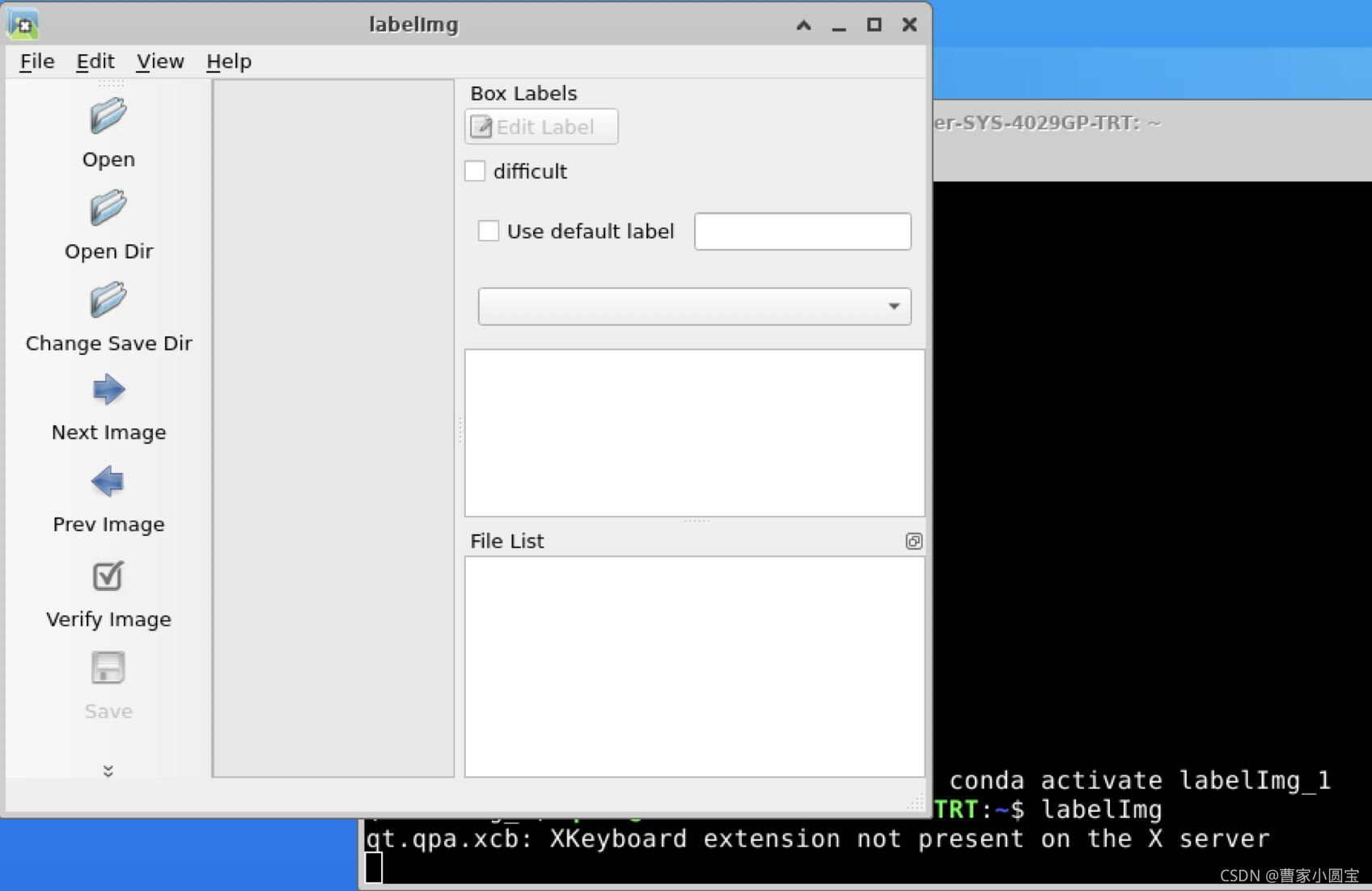
Install from source
Download source code , Prepare the virtual environment
# Environmental preparation
conda create -n labelImg_2 python==3.7
conda activate labelImg_2
pip install PyQt5
pip install lxml
pyrcc5 -o libs/resources.py resources.qrc
# download
git clone https://github.com/tzutalin/labelImg
cd labelImg
# Use
python3 labelImg.py
#
python3 labelImg.py [IMAGE_PATH] [PRE-DEFINED CLASS FILE]
Use pip list Check out the installation package
pip list
Package Version
---------- ---------
certifi 2021.10.8
lxml 4.6.3
pip 21.2.2
PyQt5 5.15.5
PyQt5-Qt5 5.15.2
PyQt5-sip 12.9.0
setuptools 58.0.4
wheel 0.37.0
The software screenshot is as follows 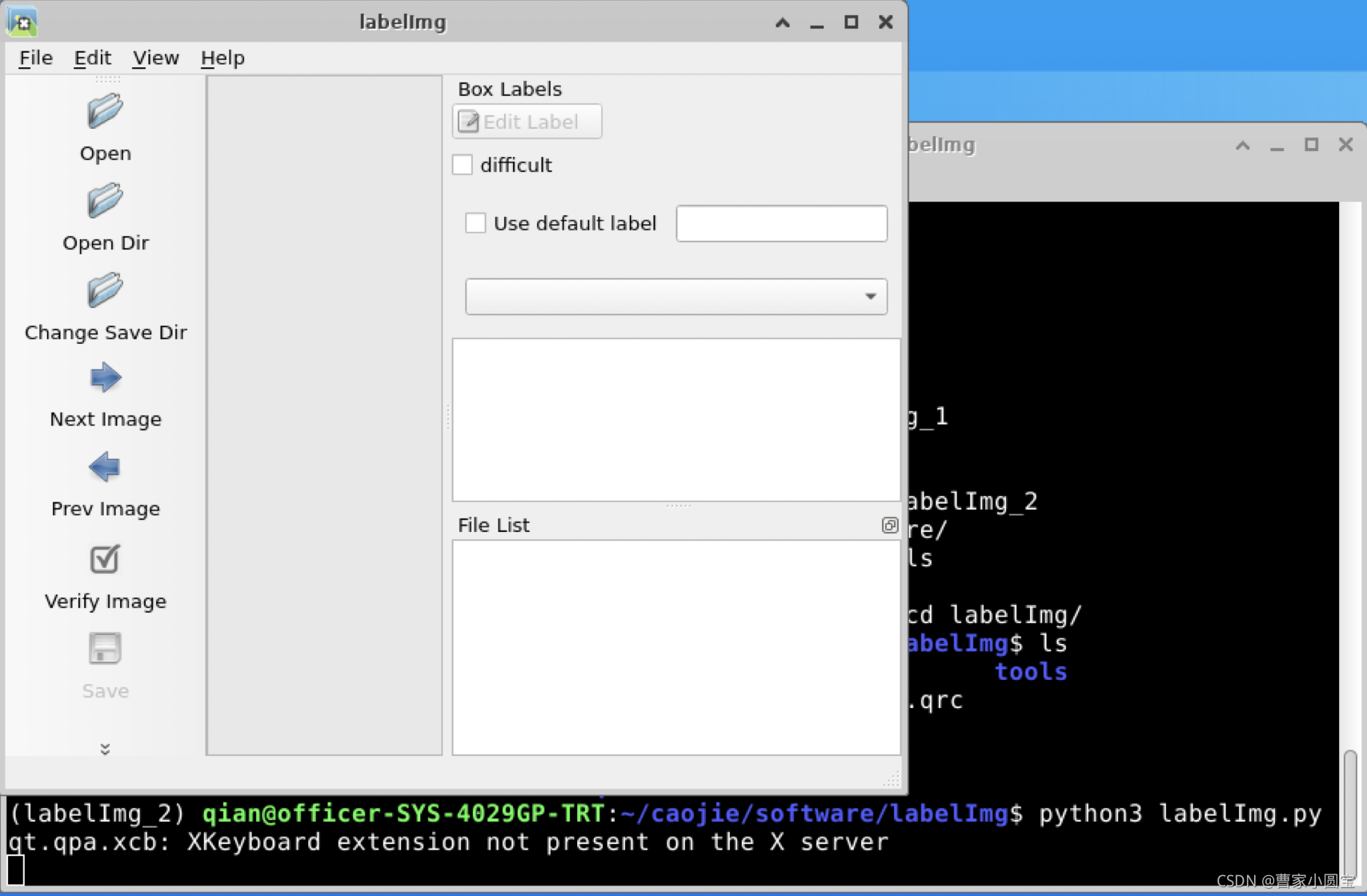
labelme
git Address : https://github.com/wkentaro/labelme
install
The installation command is as follows :
conda create --name=labelme python=3.6
source activate labelme
pip install labelme
Use
Type directly in the environment
labelme
The interface appears as follows , At this point, you can open the image path for annotation :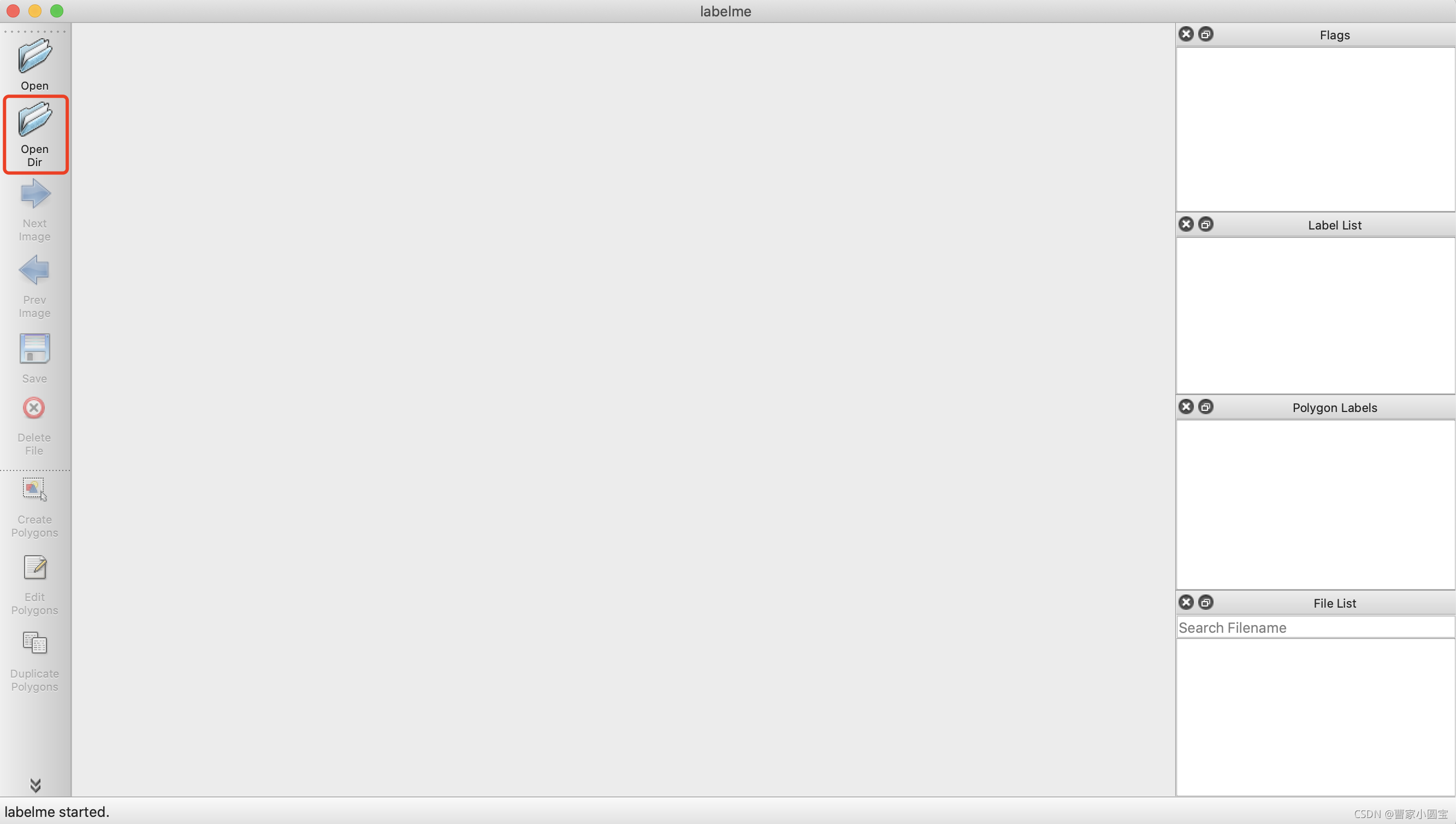
Click on Create Polygons Annotate , Enter the label


Click the menu bar on the left to save , Save as json file .
Generate label data
# Use command
labelme_json_to_dataset DJI_20210414132518_0423_Z.json
Build folder DJI_20210414132518_0423_Z_json, The contents are as follows :
notes : You can put more than one labelme_json_to_dataset aa.json Write to batch file
mmdetection
git Address : https://github.com/open-mmlab/mmdetection
git clone https://github.com/open-mmlab/mmdetection
Download to server , Update to local , use pycharm Editor open ( Reference resources https://blog.csdn.net/fighting_Kitty/article/details/121023315)
Configuration environment
find readme in Installation,get_started.md Environment installation is detailed in , The main orders are as follows :
# Creating a virtual environment
conda create -n openmmlab python=3.7 -y
conda activate openmmlab
# install PyTorch and torchvision
#( According to your own cuda edition (nvcc -V)
# Go to pytorch Choose on the official website https://pytorch.org/get-started/previous-versions/)
# CUDA 11.0
pip install torch==1.7.1+cu110 torchvision==0.8.2+cu110 torchaudio==0.7.2 -f https://download.pytorch.org/whl/torch_stable.html
# Install MMDetection( Automatic or manual , Automatic simple , Manual is suitable for debugging research code )
pip install openmim
mim install mmdet
# Manual
pip install torch==1.7.0+cu110 torchvision==0.8.1+cu110 torchaudio==0.7.0 -f https://download.pytorch.org/whl/torch_stable.html
pip install mmcv-full -f https://download.openmmlab.com/mmcv/dist/cu110/1.7.1+cu110/index.htm
attach :cuda see nvcc -V
nvcc -V
nvcc: NVIDIA (R) Cuda compiler driver
Copyright (c) 2005-2020 NVIDIA Corporation
Built on Thu_Jun_11_22:26:38_PDT_2020
Cuda compilation tools, release 11.0, V11.0.194
Build cuda_11.0_bu.TC445_37.28540450_0
function
mkdir checkpoints
cd checkpoints
wget https://download.openmmlab.com/mmdetection/v2.0/faster_rcnn/faster_rcnn_r50_fpn_1x_coco/faster_rcnn_r50_fpn_1x_coco_20200130-047c8118.pth
wget https://github.com/open-mmlab/mmdetection/tree/master/configs/faster_rcnn/faster_rcnn_r50_fpn_1x_coco.py
Code
from mmdet.apis import init_detector, inference_detector
config_file = '../configs/faster_rcnn/faster_rcnn_r50_fpn_1x_coco.py'
# download the checkpoint from model zoo and put it in `checkpoints/`
# url: https://download.openmmlab.com/mmdetection/v2.0/faster_rcnn/faster_rcnn_r50_fpn_1x_coco/faster_rcnn_r50_fpn_1x_coco_20200130-047c8118.pth
checkpoint_file = '../checkpoints/faster_rcnn_r50_fpn_1x_coco_20200130-047c8118.pth'
device = 'cuda:0'
# init a detector
model = init_detector(config_file, checkpoint_file, device=device)
# inference the demo image
inference_detector(model, '../demo/demo.jpg')
Fine tune with your own dataset
Download pre training model
mmdetection It provides a wealth of pre training weight models , This article USES the faster_rcnn_r50_fpn_1x_coco_20200130-047c8118.pth, Download it and put it in checkpoints Under the path
voc The data is modified to standard coco Format
use labelImg Label the detection picture , The format of annotation data is PASCAL VOC The format of , One picture corresponds to one XML Note document .COCO data format , All image data annotation information is saved in one JSON In file . The conversion code is as follows :
import json
import os, sys
import xml.etree.ElementTree as ET
import pdb;pdb.set_trace()
mode = 'test' # This can be changed to train、val
DATA_DIR = '/home/qian/caojie/software/mmdetection/data/hotel/' + mode + '/'
ANN_DIR = DATA_DIR + 'annotations/'
# ==================== Need modification train or val ========================
COCO_JSON_FILE = DATA_DIR + 'hotel_' + mode + '.json' # json save path
VOC_XMLS_DIR = DATA_DIR + 'annotations/'
# ==================================================================
if not os.path.exists(ANN_DIR):
os.makedirs(ANN_DIR)
# coco images A list of
images = []
# coco annotations A list of
annotations = []
# coco categories A list of
# If necessary, pre-define category and its id
PRE_DEFINE_CATEGORIES = {
"background": 0, "bed": 1, "chair": 2, "curtain": 3}
categories = [
{
'id': 0,
'name': 'background',
'supercategory': 'object',
},
{
'id': 1,
'name': 'bed',
'supercategory': 'object',
},
{
'id': 2,
'name': 'chair',
'supercategory': 'object',
},
{
'id': 3,
'name': 'curtain',
'supercategory': 'object',
}
]
# coco Store format dictionary
coco_json = {
"images": images,
"annotations": annotations,
"categories": categories
}
''' purpose: voc Of xml turn coco Of json '''
def labelImg_voc2coco():
import pdb;pdb.set_trace()
voc_xmls_list = os.listdir(VOC_XMLS_DIR)
converted_num = 0
image_id = 0
bbox_id = 0
for xml_fileName in voc_xmls_list:
# Progress output
converted_num += 1
sys.stdout.write('\r>> Processing %s, Converting xml %d/%d' % (xml_fileName, converted_num, len(voc_xmls_list)))
sys.stdout.flush()
# analysis xml
xml_fullName = os.path.join(VOC_XMLS_DIR, xml_fileName)
tree = ET.parse(xml_fullName) # analysis xml Element tree
root = tree.getroot() # Get the root node of the tree
# image: file_name
filename = get_element(root, 'filename').text.split('.')[0] + '.jpg' # read xml The file name in the file
# filename = xml_fileName # Read file name
# image: id
image_id = image_id + 1
# image: width & height
size = get_element(root, 'size')
img_width = int(get_element(size, 'width').text)
img_height = int(get_element(size, 'height').text)
# images
image = {
'file_name': filename,
'id': image_id,
'width': img_width,
'height': img_height
}
coco_json['images'].append(image)
for obj in get_elements(root, 'object'):
# annotation: category_id
category = get_element(obj, 'name').text
if category not in PRE_DEFINE_CATEGORIES:
new_id = len(PRE_DEFINE_CATEGORIES) + 1
PRE_DEFINE_CATEGORIES[category] = new_id
category_id = PRE_DEFINE_CATEGORIES[category]
# annotation: id
bbox_id += 1
# annotation: bbox
bndbox = get_element(obj, 'bndbox')
xmin = int(get_element(bndbox, 'xmin').text)
ymin = int(get_element(bndbox, 'ymin').text)
xmax = int(get_element(bndbox, 'xmax').text)
ymax = int(get_element(bndbox, 'ymax').text)
assert (xmax > xmin)
assert (ymax > ymin)
bbox_width = abs(xmax - xmin)
bbox_height = abs(ymax - ymin)
# annotation: segmentation
# seg = list(eval(get_element(obj, 'segmentation').text))
annotation = {
'id': bbox_id,
'image_id': image_id,
'category_id': category_id,
# 'segmentation': [seg],
'area': bbox_width * bbox_height,
'bbox': [xmin, ymin, bbox_width, bbox_height],
'iscrowd': 0
}
coco_json['annotations'].append(annotation)
print('\r')
print("Num of categories: %s" % len(categories))
print("Num of images: %s" % len(images))
print("Num of annotations: %s" % len(annotations))
print(PRE_DEFINE_CATEGORIES)
# coco Format dictionary writes json
with open(COCO_JSON_FILE, 'w') as outfile:
outfile.write(json.dumps(coco_json))
''' input: @root: The root node @childElementName: Byte point tag name output: @elements: All matching sub element objects under the root node '''
def get_elements(root, childElementName):
elements = root.findall(childElementName)
return elements
''' input: @root: The root node @childElementName: Byte point tag name output: @elements: The first conforming sub element object under the root node '''
def get_element(root, childElementName):
element = root.find(childElementName)
return element
if __name__ == '__main__':
print('start convert')
labelImg_voc2coco()
print('\nconvert finished!')
The final annotation data folder is as follows :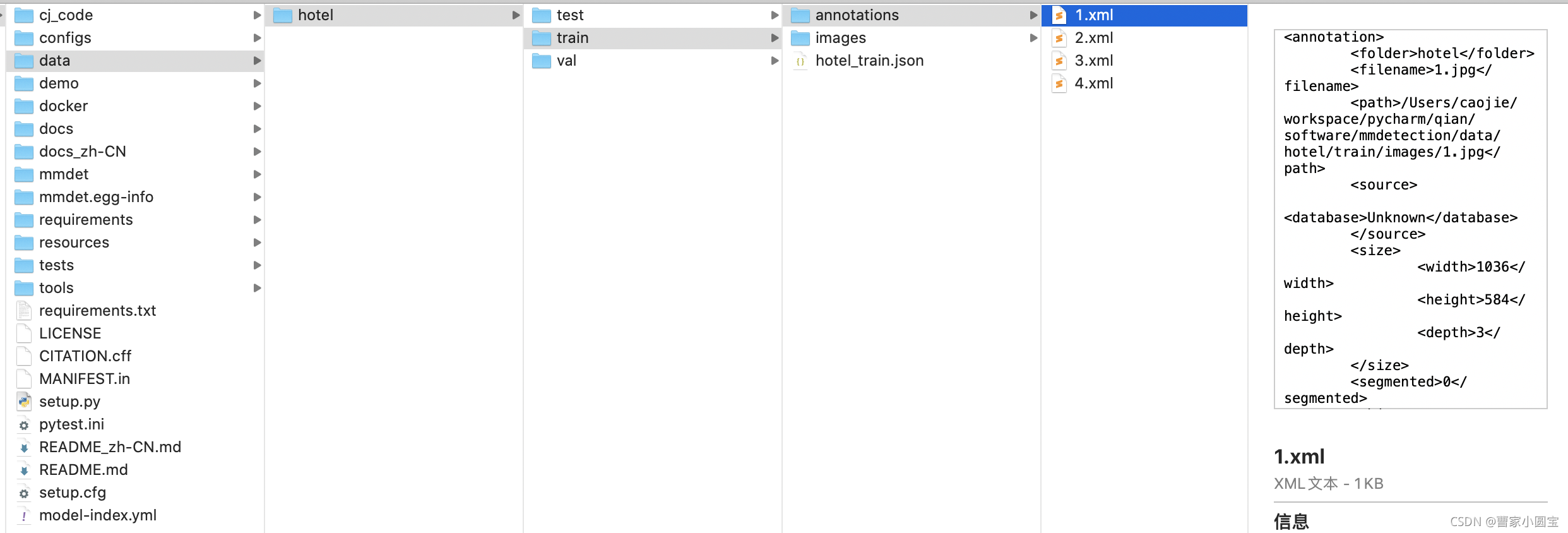
Create a new data class file
Create a new data class file mmdet/datasets/hotel.py, The contents are as follows :
import itertools
import logging
import os.path as osp
import tempfile
import warnings
from collections import OrderedDict
import mmcv
import numpy as np
from mmcv.utils import print_log
from terminaltables import AsciiTable
from mmdet.core import eval_recalls
from .api_wrappers import COCO, COCOeval
from .builder import DATASETS
from .custom import CustomDataset
from .coco import CocoDataset # Import coco Dataset class
@DATASETS.register_module()
class HotelDataset(CocoDataset): # Here inherit coco Dataset class
CLASSES = ('background', 'bed', 'chair', 'curtain')
def load_annotations(self, ann_file):
"""Load annotation from COCO style annotation file. Args: ann_file (str): Path of annotation file. Returns: list[dict]: Annotation info from COCO api. """
self.coco = COCO(ann_file)
# The order of returned `cat_ids` will not
# change with the order of the CLASSES
self.cat_ids = self.coco.get_cat_ids(cat_names=self.CLASSES)
self.cat2label = {
cat_id: i for i, cat_id in enumerate(self.cat_ids)}
self.img_ids = self.coco.get_img_ids()
data_infos = []
total_ann_ids = []
for i in self.img_ids:
info = self.coco.load_imgs([i])[0]
info['filename'] = info['file_name']
data_infos.append(info)
ann_ids = self.coco.get_ann_ids(img_ids=[i])
total_ann_ids.extend(ann_ids)
assert len(set(total_ann_ids)) == len(
total_ann_ids), f"Annotation ids in '{
ann_file}' are not unique!"
return data_infos
Remember in mmdet/datasets/init.py In file , Add your own dataset name
# Copyright (c) OpenMMLab. All rights reserved.
from .builder import DATASETS, PIPELINES, build_dataloader, build_dataset
from .cityscapes import CityscapesDataset
from .coco import CocoDataset
from .coco_panoptic import CocoPanopticDataset
from .custom import CustomDataset
from .dataset_wrappers import (ClassBalancedDataset, ConcatDataset,
MultiImageMixDataset, RepeatDataset)
from .deepfashion import DeepFashionDataset
from .lvis import LVISDataset, LVISV1Dataset, LVISV05Dataset
from .samplers import DistributedGroupSampler, DistributedSampler, GroupSampler
from .utils import (NumClassCheckHook, get_loading_pipeline,
replace_ImageToTensor)
from .voc import VOCDataset
from .wider_face import WIDERFaceDataset
from .xml_style import XMLDataset
from .hotel import HotelDataset # Import your own data class file here
__all__ = [
'CustomDataset', 'XMLDataset', 'CocoDataset', 'DeepFashionDataset',
'VOCDataset', 'CityscapesDataset', 'LVISDataset', 'LVISV05Dataset',
'LVISV1Dataset', 'GroupSampler', 'DistributedGroupSampler',
'DistributedSampler', 'build_dataloader', 'ConcatDataset', 'RepeatDataset',
'ClassBalancedDataset', 'WIDERFaceDataset', 'DATASETS', 'PIPELINES',
'build_dataset', 'replace_ImageToTensor', 'get_loading_pipeline',
'NumClassCheckHook', 'CocoPanopticDataset', 'MultiImageMixDataset',
'HotelDataset' # Add your own data set here
]
Because I want to register , therefore , To reinstall from the source mmdet. It's explained later .
Configuration file modification
Create your own profile , Path is :configs/caojie_configs/config.py. According to faster_rcnn_r50_fpn_1x_coco.py What's in the configuration file , Put this 4 Files related model、dataset、schedule、default_runtime The content of , Copy to your own configuration file .
_base_ = [
'../_base_/models/faster_rcnn_r50_fpn.py',
'../_base_/datasets/coco_detection.py',
'../_base_/schedules/schedule_1x.py', '../_base_/default_runtime.py'
]
Finally, my configuration file is as follows :
# model settings
model = dict(
type='FasterRCNN',
backbone=dict(
type='ResNet',
depth=50,
num_stages=4,
out_indices=(0, 1, 2, 3),
frozen_stages=1,
norm_cfg=dict(type='BN', requires_grad=True),
norm_eval=True,
style='pytorch',
init_cfg=dict(type='Pretrained', checkpoint='torchvision://resnet50')),
neck=dict(
type='FPN',
in_channels=[256, 512, 1024, 2048],
out_channels=256,
num_outs=5),
rpn_head=dict(
type='RPNHead',
in_channels=256,
feat_channels=256,
anchor_generator=dict(
type='AnchorGenerator',
scales=[8],
ratios=[0.5, 1.0, 2.0],
strides=[4, 8, 16, 32, 64]),
bbox_coder=dict(
type='DeltaXYWHBBoxCoder',
target_means=[.0, .0, .0, .0],
target_stds=[1.0, 1.0, 1.0, 1.0]),
loss_cls=dict(
type='CrossEntropyLoss', use_sigmoid=True, loss_weight=1.0),
loss_bbox=dict(type='L1Loss', loss_weight=1.0)),
roi_head=dict(
type='StandardRoIHead',
bbox_roi_extractor=dict(
type='SingleRoIExtractor',
roi_layer=dict(type='RoIAlign', output_size=7, sampling_ratio=0),
out_channels=256,
featmap_strides=[4, 8, 16, 32]),
bbox_head=dict(
type='Shared2FCBBoxHead',
in_channels=256,
fc_out_channels=1024,
roi_feat_size=7,
num_classes=4, # Fine tuning Change to Number of categories +1
bbox_coder=dict(
type='DeltaXYWHBBoxCoder',
target_means=[0., 0., 0., 0.],
target_stds=[0.1, 0.1, 0.2, 0.2]),
reg_class_agnostic=False,
loss_cls=dict(
type='CrossEntropyLoss', use_sigmoid=False, loss_weight=1.0),
loss_bbox=dict(type='L1Loss', loss_weight=1.0))),
# model training and testing settings
train_cfg=dict(
rpn=dict(
assigner=dict(
type='MaxIoUAssigner',
pos_iou_thr=0.7,
neg_iou_thr=0.3,
min_pos_iou=0.3,
match_low_quality=True,
ignore_iof_thr=-1),
sampler=dict(
type='RandomSampler',
num=256,
pos_fraction=0.5,
neg_pos_ub=-1,
add_gt_as_proposals=False),
allowed_border=-1,
pos_weight=-1,
debug=False),
rpn_proposal=dict(
nms_pre=2000,
max_per_img=1000,
nms=dict(type='nms', iou_threshold=0.7),
min_bbox_size=0),
rcnn=dict(
assigner=dict(
type='MaxIoUAssigner',
pos_iou_thr=0.5,
neg_iou_thr=0.5,
min_pos_iou=0.5,
match_low_quality=False,
ignore_iof_thr=-1),
sampler=dict(
type='RandomSampler',
num=512,
pos_fraction=0.25,
neg_pos_ub=-1,
add_gt_as_proposals=True),
pos_weight=-1,
debug=False)),
test_cfg=dict(
rpn=dict(
nms_pre=1000,
max_per_img=1000,
nms=dict(type='nms', iou_threshold=0.7),
min_bbox_size=0),
rcnn=dict(
score_thr=0.05,
nms=dict(type='nms', iou_threshold=0.5),
max_per_img=100)
# soft-nms is also supported for rcnn testing
# e.g., nms=dict(type='soft_nms', iou_threshold=0.5, min_score=0.05)
))
# dataset settings
dataset_type = 'HotelDataset' # Here change to your own dataset class name Modelled on the mmdet/datasets/coco.py file
data_root = '/home/qian/caojie/software/mmdetection/data/hotel/' # Modify your data directory here
img_norm_cfg = dict(
mean=[123.675, 116.28, 103.53], std=[58.395, 57.12, 57.375], to_rgb=True)
train_pipeline = [
dict(type='LoadImageFromFile'),
dict(type='LoadAnnotations', with_bbox=True),
dict(type='Resize', img_scale=(1333, 800), keep_ratio=True),
dict(type='RandomFlip', flip_ratio=0.5),
dict(type='Normalize', **img_norm_cfg),
dict(type='Pad', size_divisor=32),
dict(type='DefaultFormatBundle'),
dict(type='Collect', keys=['img', 'gt_bboxes', 'gt_labels']),
]
test_pipeline = [
dict(type='LoadImageFromFile'),
dict(
type='MultiScaleFlipAug',
img_scale=(1333, 800),
flip=False,
transforms=[
dict(type='Resize', keep_ratio=True),
dict(type='RandomFlip'),
dict(type='Normalize', **img_norm_cfg),
dict(type='Pad', size_divisor=32),
dict(type='ImageToTensor', keys=['img']),
dict(type='Collect', keys=['img']),
])
]
data = dict(
samples_per_gpu=2,
workers_per_gpu=2,
train=dict(
type=dataset_type,
ann_file=data_root + 'train/hotel_train.json', # Modify your training set data here
img_prefix=data_root + 'train/images/', # Modify your training set data here
pipeline=train_pipeline),
val=dict(
type=dataset_type,
ann_file=data_root + 'val/hotel_val.json', # Modify your own validation set data here
img_prefix=data_root + 'val/images/', # Modify your own validation set data here
pipeline=test_pipeline),
test=dict(
type=dataset_type,
ann_file=data_root + 'test/hotel_test.json', # Modify your own test set data here
img_prefix=data_root + 'test/images/', # Modify your own test set data here
pipeline=test_pipeline))
evaluation = dict(interval=1, metric='bbox')
# optimizer
optimizer = dict(type='SGD', lr=0.01, momentum=0.9, weight_decay=0.0001) # The learning rate is set to be lower during fine-tuning
optimizer_config = dict(grad_clip=None)
# learning policy
lr_config = dict(
policy='step',
warmup='linear',
warmup_iters=500,
warmup_ratio=0.001,
step=[8, 11])
runner = dict(type='EpochBasedRunner', max_epochs=8) # Fine tuning epochs Set a small point
checkpoint_config = dict(interval=1)
# yapf:disable
log_config = dict(
interval=50,
hooks=[
dict(type='TextLoggerHook'),
# dict(type='TensorboardLoggerHook')
])
# yapf:enable
custom_hooks = [dict(type='NumClassCheckHook')]
dist_params = dict(backend='nccl')
log_level = 'INFO'
load_from = 'checkpoints/faster_rcnn_r50_fpn_1x_coco_20200130-047c8118.pth' # Fine tuning , Change to pre training model path
resume_from = None
workflow = [('train', 1)]
Training
Run the command as follows :
python tools/train.py configs/caojie_configs/config.py
Report errors
Traceback (most recent call last):
File "train.py", line 16, in <module>
from mmdet.apis import init_random_seed, set_random_seed, train_detector
ImportError: cannot import name 'init_random_seed' from 'mmdet.apis' (/home/qian/anaconda3/envs/openmmlab/lib/python3.7/site-packages/mmdet/apis/__init__.py)
Changed several project codes , The result is a sudden awakening , This is a pip install mmdet The error in the bag , So find the environment directory and have a look , Sure enough, there is a lack init_random_seed, Including the same level directory train.py Inside init_random_seed Function implementation . However, it cannot be installed in the environment pip The package changes around . So I installed it from the source code mmdet, The order is as follows :
cd mmdetection # Current project path
pip install -r requirements/build.txt
pip install -v -e . # or "python setup.py develop"
After training , Generate work_dirs, Save the model here
test
The test and visual operation commands are as follows :
python tools/test.py configs/caojie_configs/config.py work_dirs/config/latest.pth --eval bbox
# Save the visual detection picture , Add the following parameters
--show --show-dir cj_code/
mmsegmentation
git Address : https://github.com/open-mmlab/mmsegmentation
git clone https://github.com/open-mmlab/mmsegmentation
边栏推荐
- Machine learning -- linear regression (sklearn)
- FTP文件上传文件实现,定时扫描文件夹上传指定格式文件文件到服务器,C语言实现FTP文件上传详解及代码案例实现
- arduino获取随机数
- Togglebutton realizes the effect of switching lights
- Amba, ahb, APB, Axi Understanding
- 【ESP32学习-2】esp32地址映射
- 冒泡排序【C语言】
- Time slice polling scheduling of RT thread threads
- mysql实现读写分离
- STM32 how to locate the code segment that causes hard fault
猜你喜欢
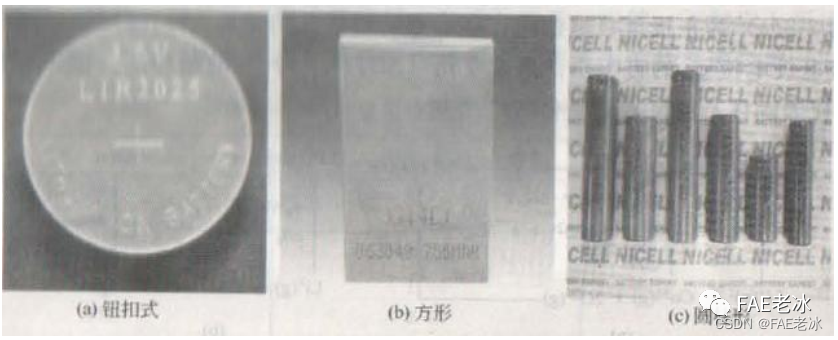
锂电池基础知识
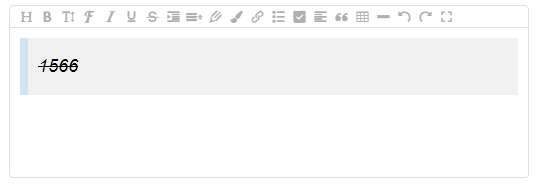
Wangeditor rich text reference and table usage
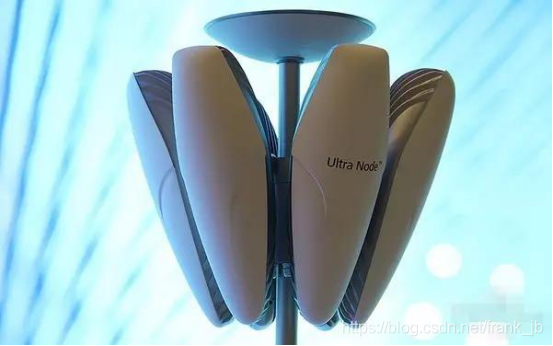
5G工作原理详解(解释&图解)

Basic knowledge of lithium battery

Cannot change version of project facet Dynamic Web Module to 2.3.

Come and walk into the JVM
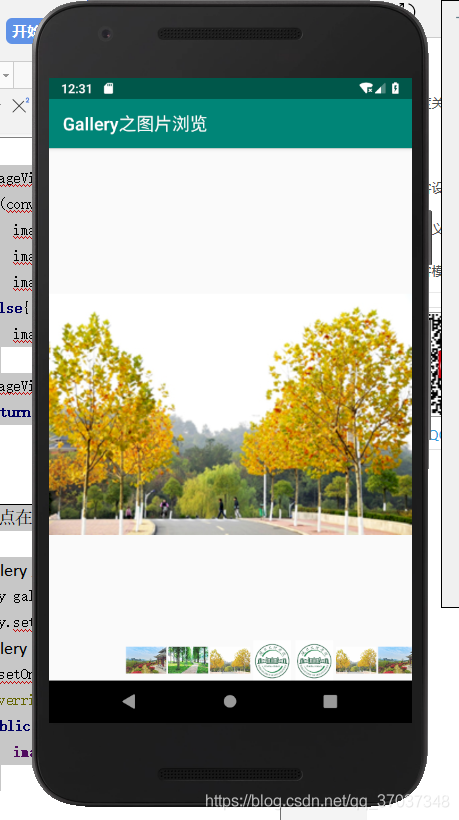
Gallery之图片浏览、组件学习
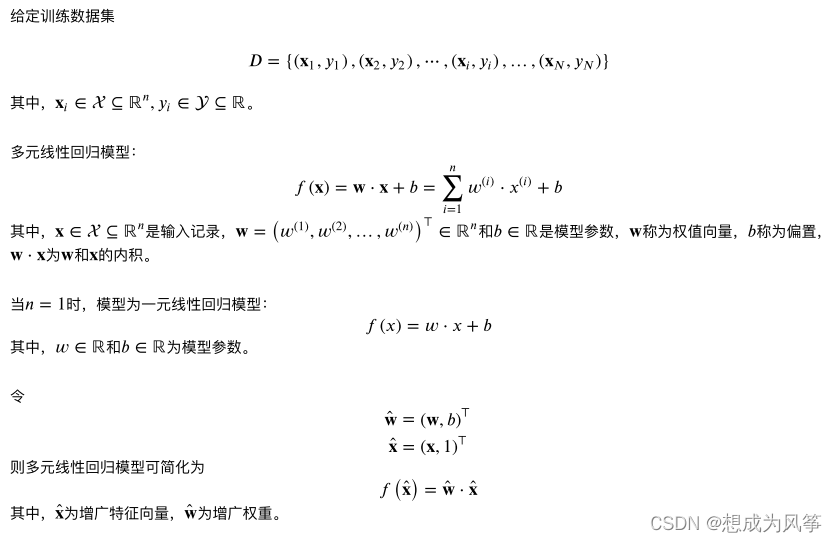
Apprentissage automatique - - régression linéaire (sklearn)

Linux yum安装MySQL

Variable star user module
随机推荐
RT-Thread的main线程“卡死”的一种可能原因及解决方案
RT-Thread API参考手册
Kaggle competition two Sigma connect: rental listing inquiries
Several declarations about pointers [C language]
Reno7 60W超级闪充充电架构
Distribute wxWidgets application
open-mmlab labelImg mmdetection
Oppo vooc fast charging circuit and protocol
Redis面试题
Come and walk into the JVM
RT-Thread 线程的时间片轮询调度
Variable star user module
arduino获取数组的长度
Contiki source code + principle + function + programming + transplantation + drive + network (turn)
Contiki源码+原理+功能+编程+移植+驱动+网络(转)
关键字 inline (内联函数)用法解析【C语言】
TypeScript
RT thread API reference manual
Linux Yum install MySQL
map文件粗略分析